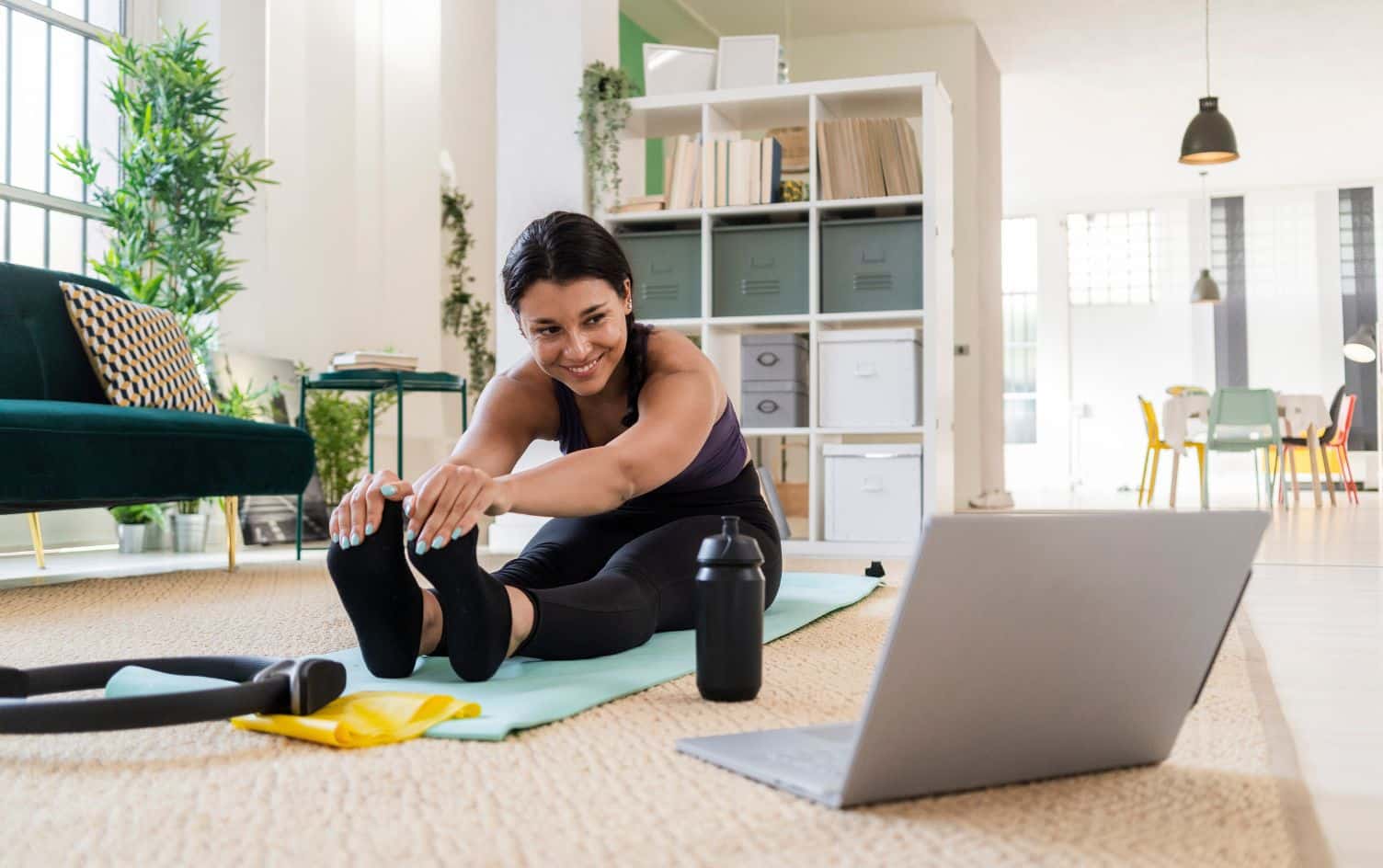Have you ever woken up with residual workout soreness and wondered if it’s still safe to hit the gym?
Working sore muscle groups can be a great way to decrease post-workout soreness, so long as you stick to bodyweight and light resistance exercises, according to physical therapist William P. Kelley, DPT, a certified strength and conditioning specialist.
SORENESS EXPLAINED
When you perform any kind of exercise that challenges your muscles in a new way (e.g., trying different exercise variations or increasing workout intensity, duration and/or volume), you create micro-tears in those muscle tissues. Muscle soreness results once inflammation sets in. “The best way to decrease this inflammation is by causing the action of muscle pumping,” Kelley says. This action gets your blood flowing and boosts circulation, helping flush out metabolic waste and bringing fresh, recovery-friendly oxygen and nutrients to sore muscles.
To speed recovery, Kelley recommends performing complex movements that incorporate multiple muscle groups, such as squats, pushups, lunges, thrusters and pullups. “Doing exercises in a circuit is a fun and efficient way to work out when sore,” Kelley says. If you add weight, keep it light. If you prefer cardio, spend some time on an assault bike or elliptical. Or, make it fun by playing a game of pickup soccer, hockey or another sport of choice.
You could also take muscle soreness as an excuse to try low-intensity activities like yoga, Pilates, walking and restorative exercises.
7 RESTORATIVE EXERCISES TO TRY
BABY CRAWL
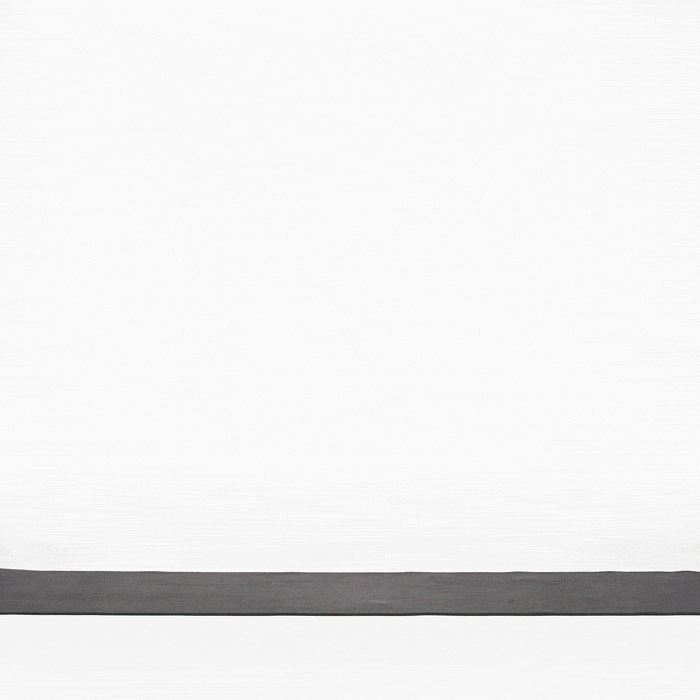
Start on the floor on your hands and knees. Step your left hand and right knee forward, followed by your right hand and left knee. Continue alternating stepping your opposite hand and knee forward until you reach a turnaround point. Keep your back flat and look straight ahead the entire time.
BASIC HANG
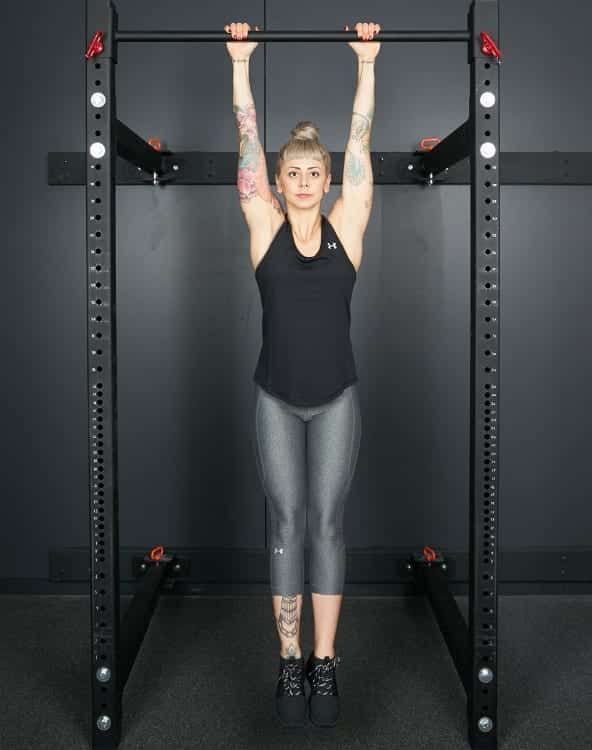
Hang from a pullup bar with your arms fully extended, shoulders down and away from your ears and feet off the floor. Hold on for as long as you’re able or at least long enough to feel a nice stretch.
BODYWEIGHT MARCH

Stand tall with your feet hip-width apart and your arms down at your sides. Brace your core and pull one heel up to bring your knee toward your midline while you simultaneously drive the opposite arm up so both are bent 90 degrees. Make sure not to over-arch your back. Return your foot to the floor and your arm to your side and repeat the movement with the opposite arm and leg. Complete as many controlled reps as you’d like.
COW-CAT
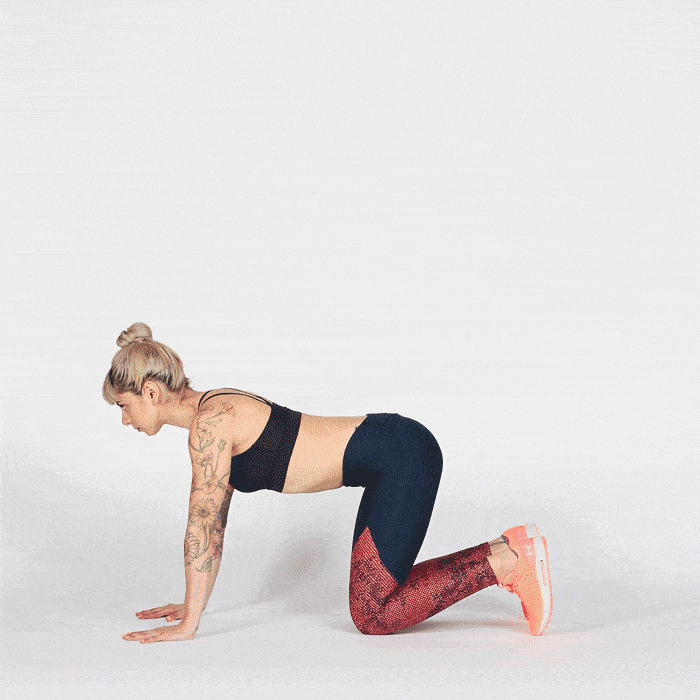
Kneel on the floor on your hands and knees so your shoulders are directly over your hands and your hips are directly over your knees. Lift your head gently so your lower back curves and hold for one count. Then, drop your head gently down in between your shoulders and raise your upper back until it’s rounded. Repeat for a few reps.
DOWNWARD DOG
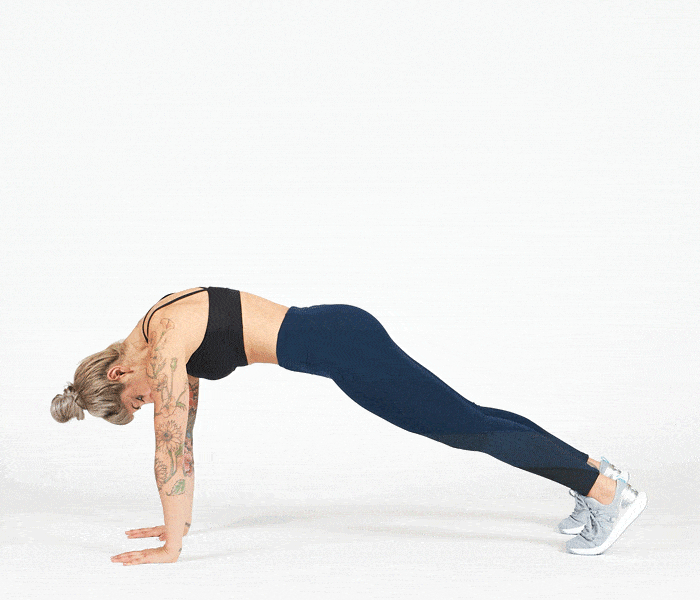
Begin on the floor on your hands and knees so your shoulders are directly over your hands and your hips are directly over your knees. Spread your fingers wide, press firmly though your palms and tuck your toes under to lift your knees off the floor. Shift your hips back and up toward the ceiling and begin to straighten your legs (don’t lock your knees). Gently press your heels toward the floor so you feel a slight stretch in your calves. Hold for as long as comfortable.
LEOPARD CRAWL
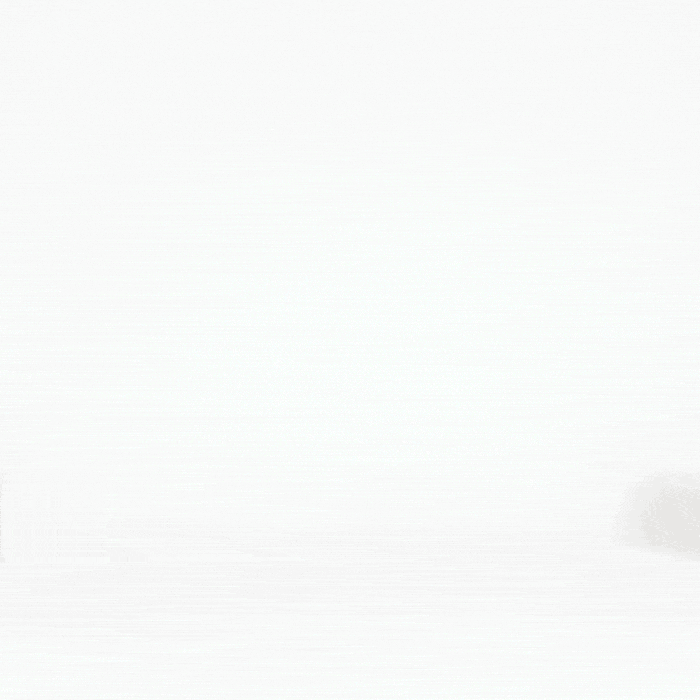
Kneel on the floor on your hands and knees so your shoulders are directly over your hands and your hips are directly over your knees. Lift your knees off the ground a few inches and step your opposite hand and foot forward. Continue alternating sides, making sure to keep your back flat and your butt down. Look straight ahead the entire time.
QUADRUPED HIP ROCK
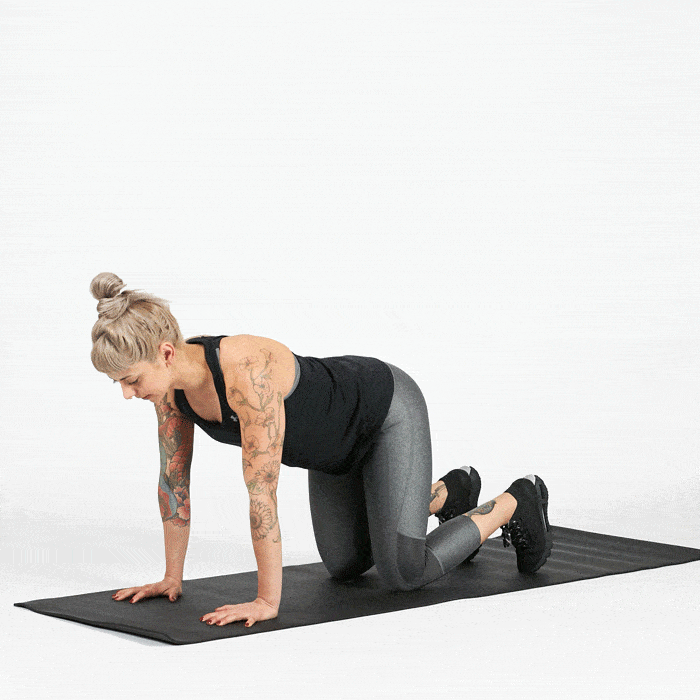
Kneel on the floor on your hands and knees so your shoulders are directly over your hands and your hips are directly over your knees. Keeping your back flat, rock your hips back toward your ankles. Reset and repeat.
THE BOTTOM LINE
What you don’t want to do is lift heavy, perform any kind of sprint training or log tons of miles when your muscles are sore, as this boosts your risk of injury.
“Sore muscles won’t be able to generate as much force or contract as quickly and efficiently when called upon,” Kelley says. Not only does this limit your potential fitness gains, but it places greater stress on your joints, tendons and ligaments, leading to pain and overuse injuries over time. What’s more, you won’t have as much muscle control and balance when you’re sore, “which also predisposes [you] for injury,” Kelley says.
In addition, you may have trouble achieving your usual full range of motion and exercise potential when you work out with sore muscles. For example, you may find you can’t squat as deeply, lift as heavy or run as efficiently, which limits the gains you’ll see from your workout. “Exercising sore muscles is for the purpose of combating soreness, not for increasing strength and size,” Kelley says.
So if you’re going to exercise with sore muscles, just make sure you do it to speed your recovery — not to make performance or fitness improvements.
